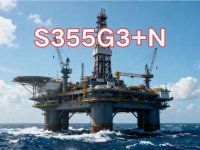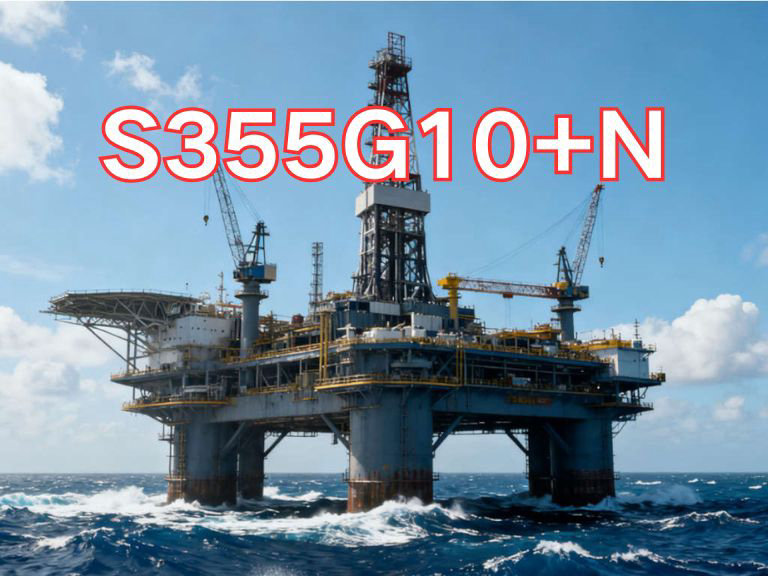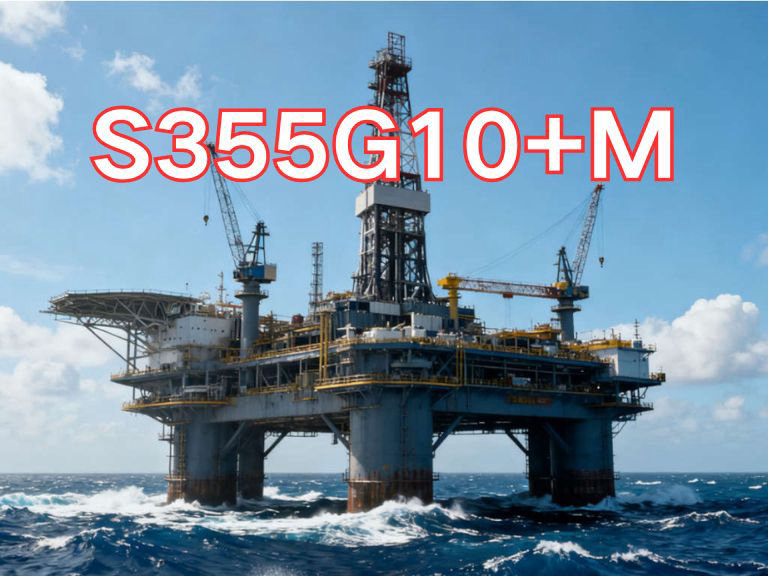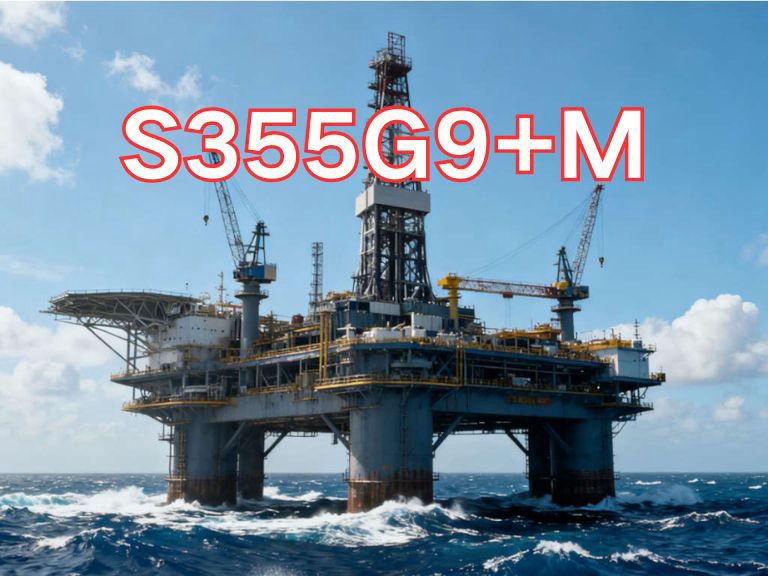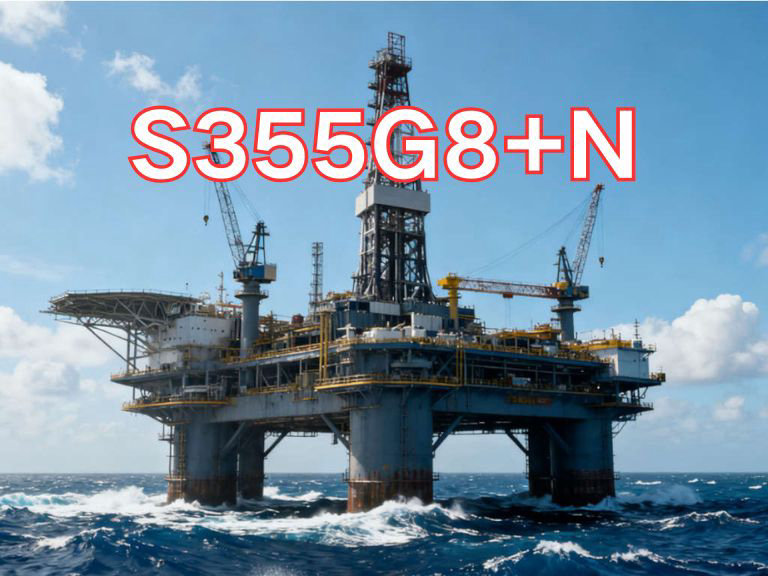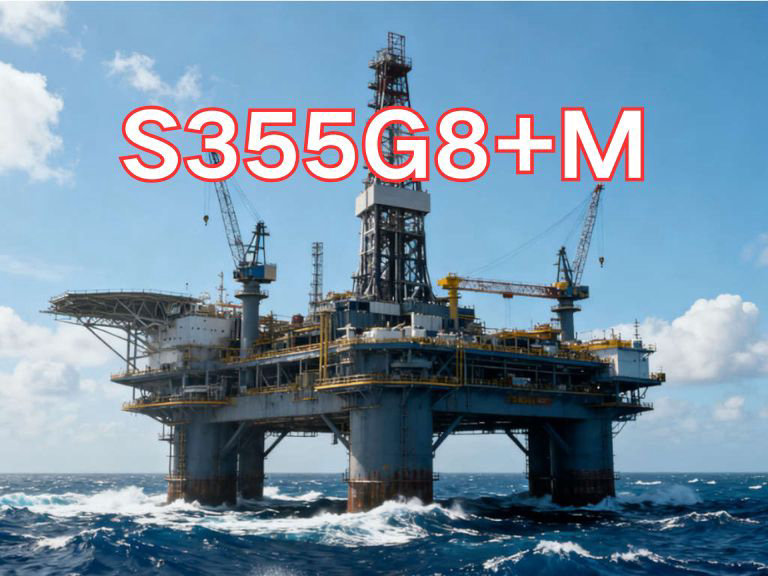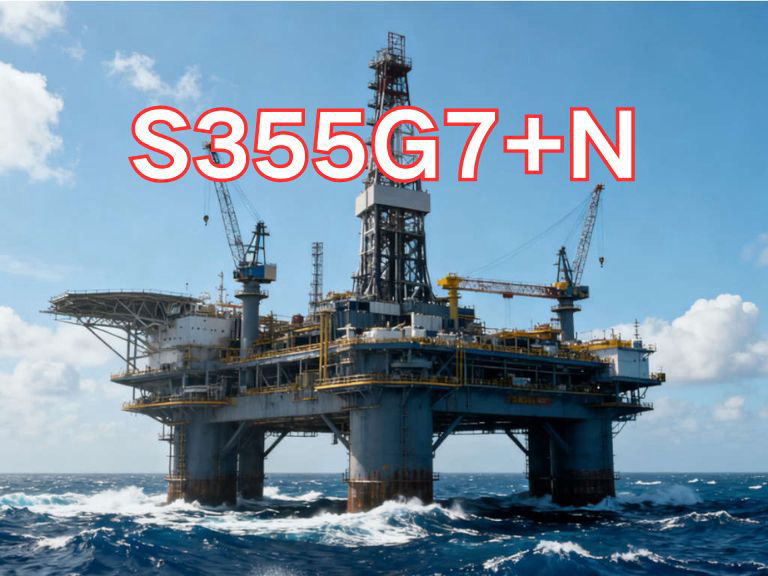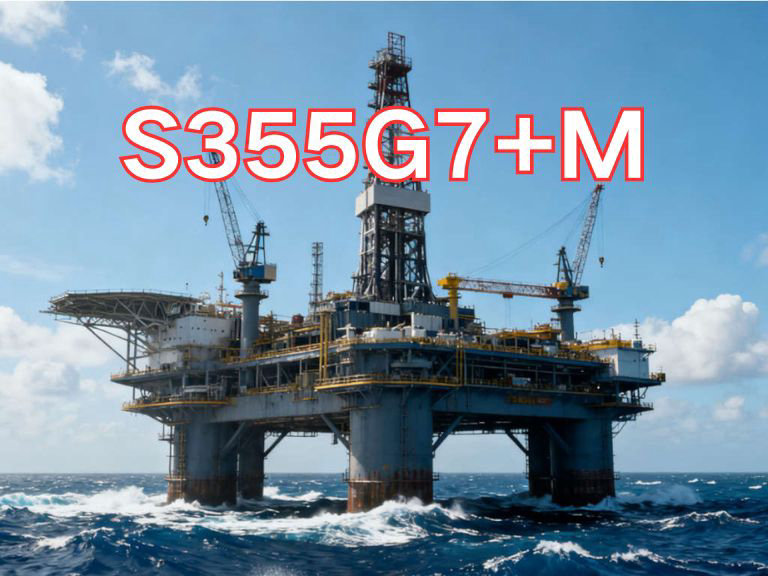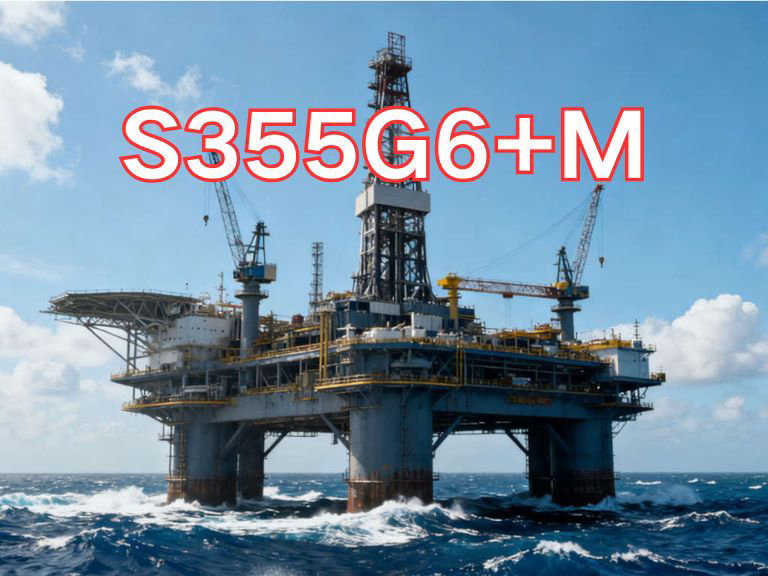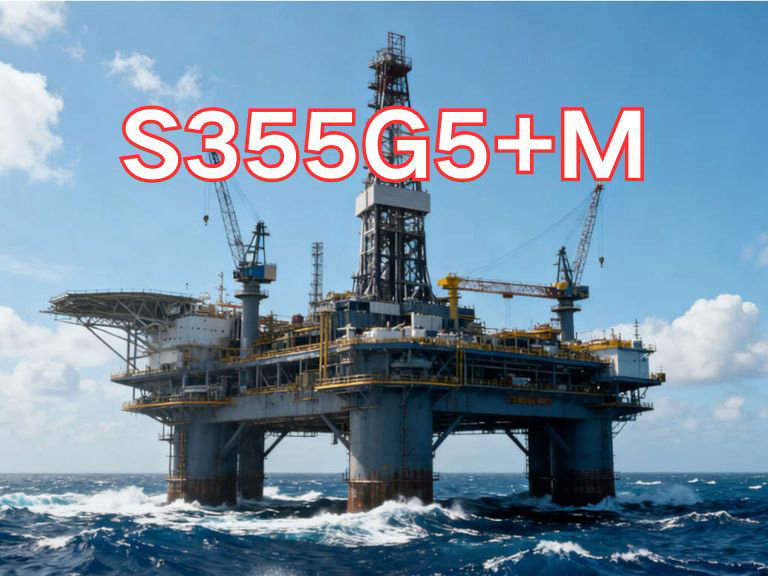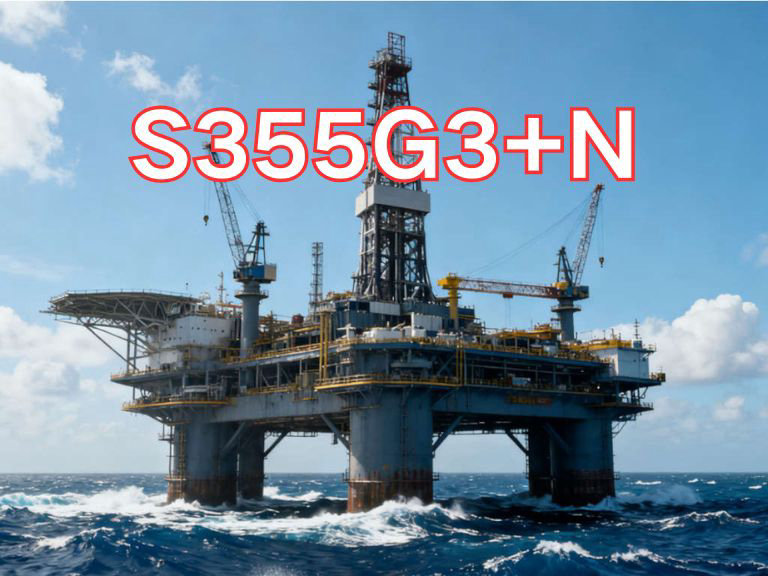

S355G3+N
S355G3+N is a high-strength, high-toughness steel plate designed for offshore and marine engineering applications. Its designation follows the European standard (EN) steel nomenclature system and is widely used in demanding environments such as offshore platforms, marine wind turbine foundations, ship structures, and subsea pipelines. The "S" stands for "Structural steel," indicating its use in load-bearing structures. "355" denotes the specified minimum yield strength of 355 MPa at room temperature. "G3" refers to the quality grade, specifying a fine-grain steel produced by thermomechanical rolling (TMCP) or normalized rolling, with strict requirements for low-temperature toughness. Specifically, the G3 grade requires Charpy V-notch impact testing at -40°C, with an average absorbed energy of no less than 47 J for three specimens and no single specimen below 35 J, demonstrating excellent resistance to brittle fracture. The suffix "+N" indicates the delivery condition: normalized or normalized rolled. This means the steel is heated into the austenitizing range and then cooled uniformly in air, resulting in a refined and homogeneous ferrite-pearlite microstructure that significantly enhances toughness, uniformity, and weldability.
The main characteristics of S355G3+N steel plate include high strength, exceptional low-temperature toughness, and good weldability. Its chemical composition is based on carbon and manganese, with small additions of microalloying elements such as niobium, vanadium, and titanium, which contribute to strength through grain refinement and precipitation hardening. The normalization process refines the grain structure, improves microstructural uniformity, reduces internal residual stresses, and enhances resistance to fatigue and lamellar tearing under complex stress conditions. The tensile strength ranges from 470 to 630 MPa, with elongation (A5) ≥22%, providing good ductility and formability. The high impact toughness at -40°C makes it particularly suitable for offshore structures in cold regions or during winter operations, effectively preventing brittle fracture and ensuring long-term structural safety. Additionally, S355G3+N has a tightly controlled carbon equivalent (CEV), offering excellent weldability—typically requiring no preheating or only minimal preheating—and is compatible with various welding processes.
S355G3+N is widely used in critical components such as jacket frames of fixed offshore platforms, monopiles, transition pieces, and grouted connections for offshore wind turbines, as well as key load-bearing parts in ships. Compared to general structural steels, its higher strength and toughness allow for lighter structures, improved load efficiency, and extended service life.
The current standard for S355G3+N steel plate is the European standard EN 10225:2023 "Weldable structural steels for use in offshore structures — Technical delivery conditions for fabricated or rolled products". This standard specifically addresses offshore and marine engineering structures, detailing requirements for chemical composition, mechanical properties, impact toughness, manufacturing processes, non-destructive testing, and inspection procedures. It serves as a key technical reference for offshore design and construction. Due to its outstanding performance, S355G3+N has become an essential material in modern offshore engineering.

Ultrasonic Testing (UT)
A key non-destructive testing technique that uses high-frequency sound waves to detect internal flaws in steel plates. The probe emits sound waves, which reflect when encountering defects such as cracks or inclusions. The receiver captures the echoes, enabling precise determination of defect location and size. With high sensitivity, strong penetration, and fast inspection speed, UT effectively ensures internal quality, widely used in the production of heavy plates, pressure vessel plates, and other high-end products to guarantee safety and reliability.

Magnetic Particle Testing (MT)
A common surface inspection method that magnetizes the workpiece, causing leakage magnetic fields at surface or near-surface defects like cracks or inclusions, which attract magnetic particles to form visible indications. Simple to operate and highly sensitive, MT is suitable for rapid inspection of surface and near-surface flaws in ferromagnetic materials, widely used for online or offline inspection of plate edges, ends, and welds, ensuring product quality and safety.

Penetrant Testing (PT)
A non-destructive method for detecting surface-breaking flaws. A penetrant liquid is applied to the cleaned steel surface, allowing it to seep into defects such as cracks or pores. After removing excess penetrant, a developer is applied, causing the trapped penetrant to bleed out and form visible indications. Simple and cost-effective, PT is suitable for inspecting surface defects in various non-porous materials, commonly used for welds, castings, and complex components, effectively ensuring surface quality of steel plates.

